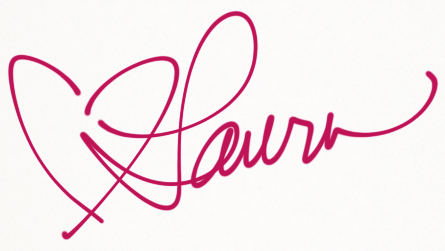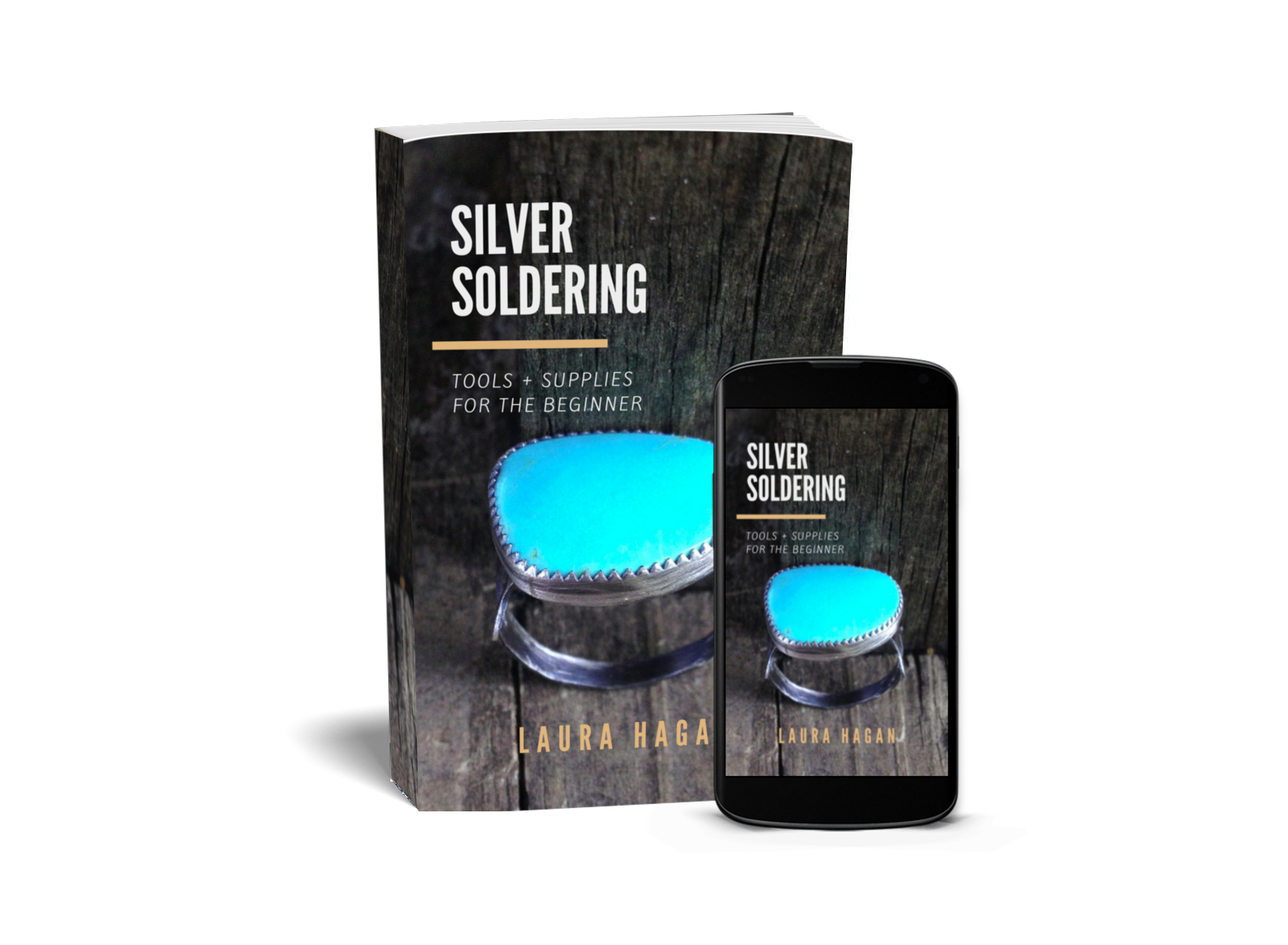A quick and easy way to turn your sterling and fine silver jewelry into fantastic pieces with character and depth is to oxidize your silver! I love the rustic, organic look that oxidation gives my silver. It makes my jewelry stand out from the others and really brings out the unique, handmade qualities that I put so much effort into creating!
In this video I quickly run through the basic steps of the method I use to oxidize my silver pieces. I’m also throwing in some info on the tools and supplies that you’ll need.
Enjoy!
Have you oxidized your silver jewelry before? What methods/ tools do you use? Do you have any tricks and tips to share? Leave a comment below and share the love!



17 Comments
Ateeya
Hai, I am selling silver oxidised jwerrly ,if anyone need it contact me by Email_ ateeyamisbah@gmail.com.
Talia
Hi Laura,
i have noticed that after w while (sometimes only few weeks) the oxidized chain is wearing off and you can see a brown\grey metal. how can I prevent this to happen?
Aly Kuhlman
Hi, Laura. I haven’t yet tried oxidizing anything – I actually haven’t worked much with silver yet, at all. I’m still a beginner. :) My question is, is it safe to oxidize a silver piece that has a stone in it? For example, a silver ring with a stone bead, or silver beaded earrings, etc. Will the LoS or baking soda damage the stone?
Thanks! :)
Ray
Hello,
This may be a dumb question..but I was wondering If you could oxidize silver/copper jewelry with salt water?
Julia
Hi, Laura! I am a beginner, and am curious if oxidation from ss non-textured chain (using the LoS method) will wear off onto the skin? Should the chain we wiped with a jewelry cloth to help prevent this? Also, I’ve heard bleach can be used to oxidize silver. Do you have any experience with this? Thanks!
MEHER
Hi Laura,
How does one get the dramatic rainbow effects. I have heard adding ammonia and salt to the LOS solution will give the more vivid blues and reds. Is there any specific technique /formula to get the rainbow look? I am a beginner and would appreciate any tips. Thanks !
Jamie
Is there something that can be used to make the oxidation permanent? I’m noticing with some 925 silver I have purchased that it will arrive showing slight signs of flaking and with consistent wear, oxidation will often diminish or fully rub off in highly touched areas. For commercial purposes this is a huge problem. Is this a result of the LOS application process or proper cleaning of the silver, or is there a way to seal in the oxidized color?
laura
Hi Jamie!
Oxidized sterling silver should never flake… I would guess that what you purchased might have been a plated metal unfortunately. The process of oxidation removes a layer of silver, it doesn’t coat or plate the silver. Once you have finished oxidizing and polishing your piece just perfectly, you can rub it with a jeweler’s wax like a Renaissance Wax. It will protect your piece and help keep it in new condition for a good while. Simply rub it on your piece and buff with a soft cloth and the end result will be a lovely transparent coat of protection for your silver pieces!
L
Dellana
I have been oxidizing silver for years with liver of sulphur. I have found that if I leave it in the solution too long when hot, that the oxidation can flake off. Evidently the oxidized layer becomes too thick. Hope this helps! :-)
Liz
Hi Laura! Thanks for share your tips, you’re very kind. I use both sterling and fine silver wire for my jewelry, but I’ve noticed that the fine silver wire gets a bright orange color instead of the black i need, and the sterling silver wire turns black very fast, I’ve only used dry LoS. What can I do in this case? Thanks.
laura
Hi Liz!
Sounds like you may need to clean your fs before oxidizing. Rinse in warm water with mild dawn dish soap and rub with an old soft tooth brush with latex gloves on to remove any oils from your hands. Then put your fs into your oxidizing solution and wait and see what happens. You may need to give it a little bit longer than sterling to turn dark. Keep trying and let us know how it turns out! Have a great day! ;) L
Jenny
Hi Laura,
I’ve only used dry LOS, adding it to hot water (I’ve heard it needs to be hot). How does the gel work- do I need to heat up the piece itself to get a nice black color? Or is room temp fine?
Thanks!
Jenny
laura
Hi Jenny! With the LoS gel, different temperatures of water will create different colors… I’ve found that warmer water speeds up the process, and with warm water, you’ll get greens and pinks after a few short minutes. (Just make sure you don’t use boiling water as it can release gases into the air that aren’t safe to breathe.) The longer you keep your piece in the water, the darker it gets. If you use room temp water, it still works just great, it just takes a little longer to turn completely dark. Give it a try and experiment with it! You’ll discover a lot of fun things you can do with liver of sulfur ;)
Bonnie
Is it REALLY environmentally safe to just pour the LOS water out? I have oxidized small pieces of copper by suspending them over ammonia in a closed jar because I know what ammonia will do, but I don’t know what LOS will do. I’ve also heard of closing your pieces up with a hard boiled egg.
laura
Hi Bonnie! Yes, it’s perfectly safe to pour out your liver of sulfur after it’s been used. I recommend pouring your baking soda and water solution into the LoS to neutralize it, then you should be just fine pouring it down the drain. You can further dilute your solution by running cool water down the drain while you’re pouring it out if you like. At least that’s normally what I do :)
I have heard of oxidizing with eggs before… it should work as sulfur is released from eggs. I haven’t tried it yet, but I’ve heard many talk about placing your pieces in a sealed plastic baggie or a glass jar with a cut boiled egg. It sounds like it may take a few days, so if you’ve got time to experiment with it, I say go for it!
Jeanne
Good for you, Laura, for posting how-to videos. I like them better than reading directions. I’ll share how I do my oxidizing.
Oxidizing jewelry is great for adding dimension to jewelry. First I clean my piece in a sudsy light ammonia solution to remove any and all oils my piece may have from me handling it. Skin has oil on it, and oil will inhibit the liver of sulphur, possibly causing my piece to have a splotchy look when oxidized. I use an old clean toothbrush for the gentle scrubbing. Then instead of applying the LoS directly to my piece with a q-tip, I mix a few drops of it into a bowl of some luke warm or warm water. Exact amount? Mix it till it gets a bit cloudy and is has a yellow hue. It really only take a few drops. I dip my piece in the LoS solution, and pull it back out after a couple/few seconds. If I don’t see an immediate darkening effect, I do it again. Two to three dips will see the piece start to darken. Dipping like that gives me a lot of control over the oxidation rate, so I can leave it lightly oxidized or go darker as it suits me. I make sure I end the process with neutralizing the LoS’d piece in the water & baking soda mixture (no specific measurements there but a couple tablespoons to a bowl of water is fine), or my piece will continue to darken. Note: the side that touches the water first, darkens first. It only took me a couple of tries with some scrap copper to get the hang of it. I encourage people to experiment with it on something they can play around with. It will only take a couple tries and you will get the hang of things. I use 0000 fine metal wool and polishing cloths to get the highlights I want from my piece when I’m done LoSing. The cool thing is if it gets too light from polishing, I can always dip it in the LoS again.
Lastly, I keep my solution until it loses its cloudiness, which usually lasts over night, then I pour it outside or into a plant – it’s just inactive sulphur solution and harmless at that point, but definitely not for consumption!
That’s just the way I do it… I’m sure others have their own ways of doing LoS and I hope they share their methods as well. :)
laura
Oh yes! Thanks for sharing your tips on oxidizing, Jeanne! There are a lot of ways to go about it… which makes this process a lot of fun in my book I love using different temperatures of water to see how many different colors I can get! LoS gel is wonderfully flexible and can adapt to whatever works for you and your set up!